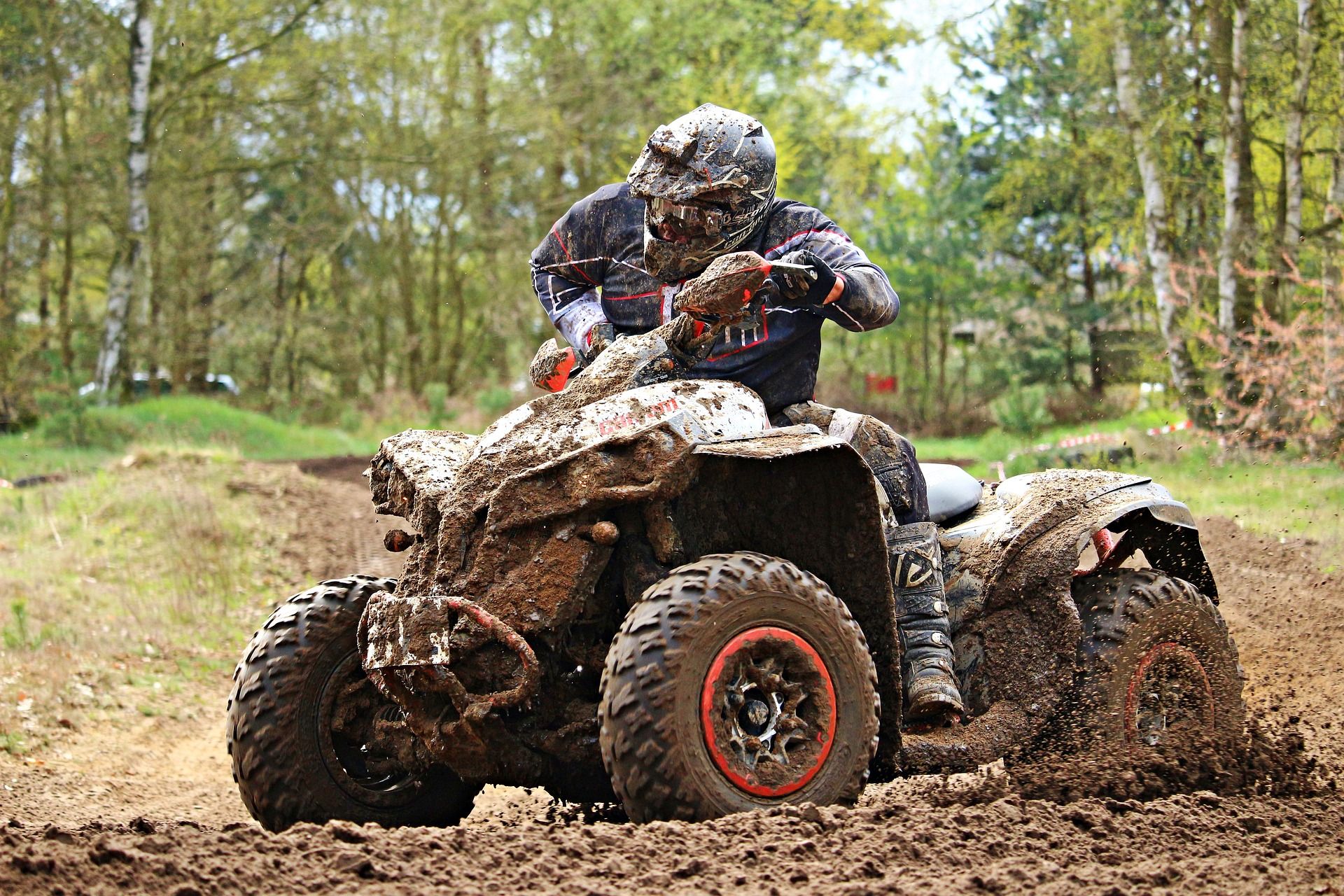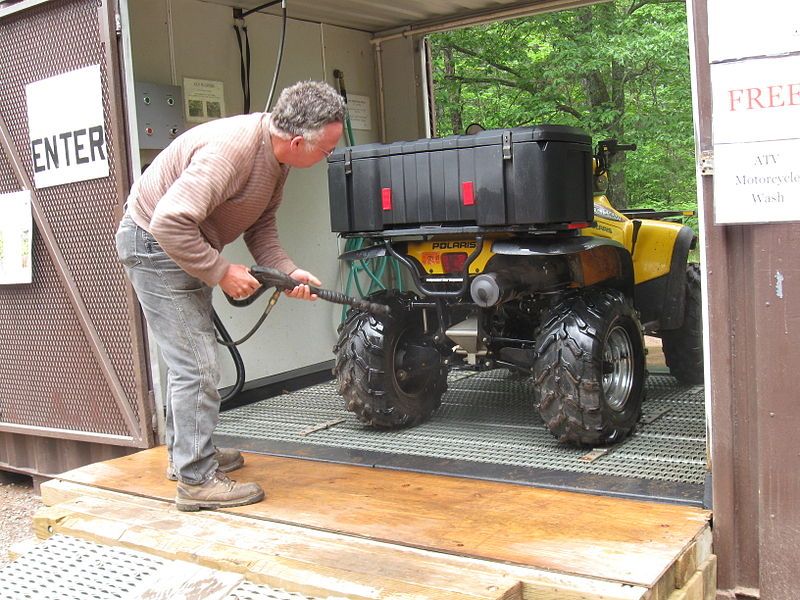ATV and UTV Troubleshooting and Maintenance
Image Credit: rihaij/ Pixabay

By Gregory Williams
From small children to full grown adults to aging seniors, we Americans love our toys. The older we get, the bigger the toys become, and with that, the price tag, sophistication and of course, the upkeep and maintenance. Whether exploring high in the mountains, flat sandy deserts, oceans, rivers and lakes, or good old streets across America, our toys take us to where we want to be and release us from the everyday grind of work, chores, and the obligations of living life.
Whether you fancy a motorhome to explore the history, culture, and nuances of America, boating on the nation’s waterways, golf carting the many magnificent links, or barreling down any of the thousands of miles of mountain or desert trails in an ATV or UTV, the one commonality is… we need to properly maintain and care for the vehicles that we love to ride.
Injuries, accidents, mechanical failures, and poor common sense can all ruin an otherwise thrilling adventure when it comes to our play vehicles. Thus, a methodical and sound checklist of regular maintenance and safe practices is essential to our enjoyment.
Sound maintenance practices in almost anything we do starts with cleanliness. A clean, shiny, and organized recreational vehicle fosters both a sense of pride, and a desire to take our vehicle out on the road again at the first chance we get. Have you ever felt that twinge of happiness and mood upswing after you have taken your car through a car wash and is now spotless inside and out… we love that “new car” smell and feeling.
Image Credit: Wikimedia Commons

Keep it clean
Whether it was my 35-foot National Sea breeze motorhome, my 29-foot Silverton Fly bridge Sedan sport fisher or my Club Car golf cart, ATV or UTV, I would break out the hose and suds after each use and give it a good wash down before storage. Sea air, road grime, tree sap, bugs and all the other grime can quickly accumulate and deteriorate or otherwise destroy a fine finish on your unit as well as affect your air filter. Cleaning the inside is critical as well to include vacuuming, wiping down counter tops, cabinets, and all surface areas to eliminate dirt germs and debris that will quickly age your vehicle. ATV’s and UTV’s should be swept or vacuumed of dirt and debris throughout. A healthy wipe down of all interior surface areas will keep your ATV/UTV looking clean and new. Storage in a safe place free from elements will go a long way in maintaining the life of your vehicle.
Oil changes
Unless you are tooling around the trails, deserts, and swamps in your electric golf cart, you will need to be concerned with oil… pressure, grade, and cleanliness. You ride your vehicles hard, and we are not out for a casual Sunday drive, especially in an ATV or UTV. Think of oil as the lifeblood of your machine. Change it and your filter often using the grade and weight recommended in your owner’s manual.
Air filters
Just as oil is the lifeblood of your ATV or other vehicle, your air filter can be viewed as the lungs of your engine. An engine needs three things to run… clean air, oil, and gasoline. Clogged and dirty filters will surely reduce or cut your engine when you need power the most…guaranteed.
Belts
Many of us remember the old days of recreational toys and vehicles when you popped the hood and saw and array of belts running air conditioners, alternators, power steering pumps and water pumps, all attached to the engine. DIY mechanics and weekend warriors would keep a variety of spare and replacement belts on hand for the inevitable moment when any one of these would need to be replaced due to aging, wear and tear or just good old-fashioned failure. Today, serpentine belts often replace the multitude of belts. This also means that belt failure can cause many critical engine components to fail simultaneously. Checking the serpentine, V-belts or otherwise for stretching and wear is essential in any pre and post use inspection and maintenance of your vehicle.
Coolent
Keeping your engine cooling system tight and in order is essential to the performance of your ATV or UTV… for if you overheat, the fun is over. There are two types of cooling systems, liquid cooled and air cooled. The most common cooling system in an ATV is liquid cooled which is a mixture of water and antifreeze like that in a car’s system often supplemented with external fans. Liquid cooled systems are the more efficient system since air cooled is dependent on the vehicle being in motion. Therefore, any routine maintenance and pre-use inspection should include an inspection for leaks, faulty hoses, and clamps.
Handlebars
In most cases, your handlebars are going to see a lot of wear and tear due to constant use. It's important that you keep your handlebars in good condition because they're vital in keeping your ATV safely in control while you’re riding. During your inspection, if you notice that your handlebars are loose, then you should simply re-glue them so that you’ll always maintain a solid grip while you’re riding. Your clutch, throttle cables, levers, and brakes also require an inspection to ensure that they’re in good working order.
Nuts & Bolts
Anyone who has ever driven an RV motorhome knows that whoever came up with this idea must have been a genius, crazy… or both. Who drives a house on wheels? Rambling down the road with its myriad of bumps, potholes, cracks and uneven surfaces and pavement types, we all understand in advance that the thousands of nuts, bolts, and screws that hold it all together are more than likely going to come loose on a regular basis. The same applies to your ATV or UTV given the utility and use for which they are designed. We drive these vehicles hard, and it is inevitable that the hardware holding it all together needs to be checked on a regular basis for sheared off nuts, bolts, and other structural elements.
Batteries
Poorly maintained batteries have caused the frustrating end to many a fine and fun ATV, RV, or boating adventure. We often take for granted that the power will be there as it is in our home or car we drive every day. ATV’s use a lot of power over a short period of time and then things are dormant. Inspection and care of batteries including keeping posts clean of corrosion and electrolysis, sound wiring connections and the batteries properly filled with water and carrying the correct voltage must be done regularly.
Tires and tire pressure
So far, all the maintenance requirements we have discussed to this point are essential to enjoying your ATV, UTV, motorhome or boat/trailer and preventing the frustrating and premature end to an enjoyable ride. The condition of your tires and not maintaining correct tire pressure however can have far more serious implications. The motorhome industry generally recommends replacing motorhome tires every 6 years regardless of how good they may appear. The consequences of a blowout on the freeway in a high-profile motorhome include but are not limited to spinouts, rollovers, and the inability to control the vehicle. An ATV or UTV has very similar consequences given the terrain we navigate.
Although tires have a date of manufacture on them, they do not come an expiration date or mileage maximum. It is up to you to carefully inspect your tires on a regular and ongoing basis. Every inspection should include a careful look for punctures such as nails, glass or debris that has been picked up by a tire, cracks in the sidewalls and between the treads and balding or uneven wear on the tires. Balding tires are obvious, and loss of tread reduces or eliminates the ability of a tire to channel dirt, debris and water thru the tread resulting in loss of braking, hydroplaning, or spinning out of control.
Visual inspection is not the only way to find out your tires need replacement. There are many indications of poor tires when driving. Vibration and wobbling could indicate problems ranging from uneven wear across the tires, which many times can be remedied by rotating the tires, to separation of the internal piles of a tire or tires. Strange noises such as humming sounds at different speeds to thumping sounds could indicate uneven tread wear or flat spots on tires.
Treat your tires with respect as they are your connection to earth. It is essential to keep tires properly inflated so they wear evenly, rotate tires regularly to encourage uniform wear across all tires and do not overload your vehicle. Use the right tires for the terrain that you will be riding and keep your tires clean with a quality tire protectant.
Brakes
Brakes are easily one of the most vital components on your ATV. Despite the fact that you wouldn’t be able to stop without them, your breaks can wear down after heavy use. Before going for your next ride, remove each wheel and check each brake pad for any debris that might have accumulated. While you’re at it, check your brake fluid to ensure that it’s at sufficient levels. Remember, if you take care of your brakes, they’ll take care of you. They may even save your life one day.
Fuel
It’s easy to lock up your ATV for the entire winter and completely ignore the fact that there’s fuel in the tank. Coming back to your ATV the following summer might have adverse consequences. If your ATV has fuel in the tank that has been sitting for months and months, it’s a good idea to drain both the tank and the carburetor and fill it with fresh fuel. Fresh fuel will make your engine happy, and it’ll run the way it’s supposed to.
Protection
How do you protect your ATV while you’re away or during the off-season? To protect your vehicle from the elements, you should store it in a place where it won’t suffer from the ravages of rain, snow, and the like. For an extra layer of protection that will also shield your ATV from the elements you can buy an ATV cover.
Troubleshooting
Many years ago, as a young merchant marine officer aboard ship, I had a fellow crewmember who was a seasoned marine engineer. He told me that you can fix anything… if you “follow the action”, meaning that in every piece of machinery… something occurs that makes something else happen that makes something else happen… all while making whatever it is work. Those were the days when most things were mechanical in nature. Now with electronics and the computerization of much in our lives, those words of wisdom, good common sense, and a thorough understanding of the Troubleshooting Guide in your Owner’s Manual can save you a lot or heartache.
Going over a simple checklist will ensure that you can enjoy yourself out on the trail in a safe manner. Otherwise, you might be in for a long walk wishing you had taken the time to inspect your ATV when you had the chance.
Be safe in your vehicle, have fun… and follow the action.
Updated